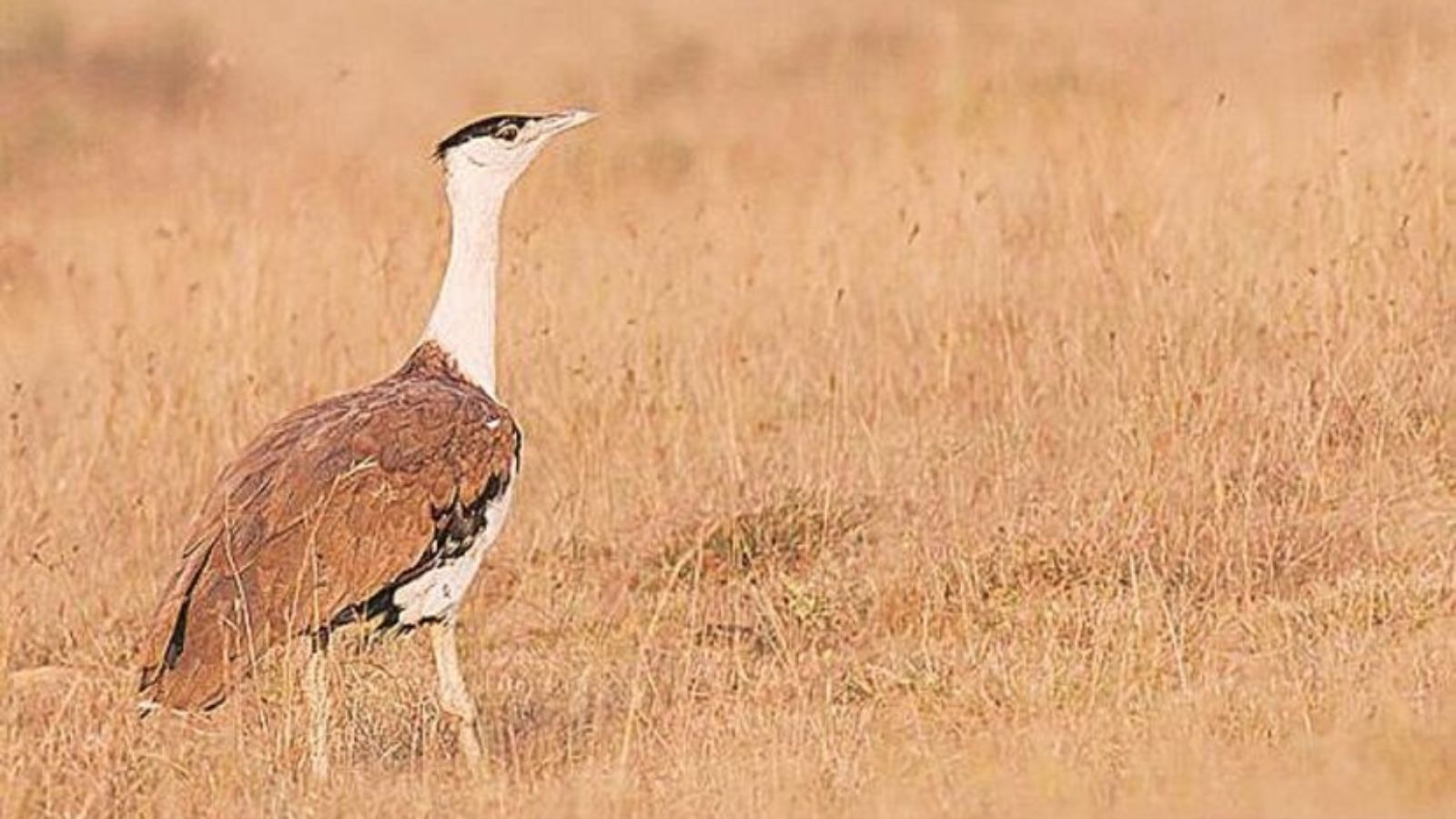The Great Indian Bustard, the state bird of Rajasthan, is listed as critically endangered by the International Union for Conservation of Nature (IUCN). With an estimated population of around 100 birds worldwide, the species is on the verge of extinction.
The story behind the name
The term “great” is fitting for its size—standing about one meter tall and weighing up to 18 kg, making it one of the heaviest flying birds. The name “bustard” comes from the French word bistarde, meaning “slow bird.” This likely refers to the bird’s tendency to walk in a slow manner, though it is capable of reaching speeds of up to 80 km/h when in flight.
Population decline and threats
Once abundant across the Indian subcontinent, the Great Indian Bustard has seen a drastic decline in numbers. Habitat loss due to agriculture, urbanization and industrialization, combined with hunting and collisions with power lines, are the primary threats to its survival. Adding to the challenge is the bird’s slow reproduction rate—typically laying just one egg per year—and the high predation of its eggs by other animals. Rajasthan’s dry grasslands serve as one of the bird’s last refuges, though it can also be spotted in Maharashtra, Karnataka, and Andhra Pradesh.

Contender for national bird of India
The Great Indian Bustard was a strong contender for India’s national bird. However, due to the unfortunate phonetic resemblance of its name to an English vulgar term, the peafowl was ultimately chosen to avoid any potential embarrassment.
Conservation efforts are now focused on protecting the bird’s dwindling population. Sanctuaries and breeding programs have been established in Rajasthan and neighboring states. While its future is uncertain, the Great Indian Bustard remains a symbol of India’s rich and fragile wildlife habitat.



